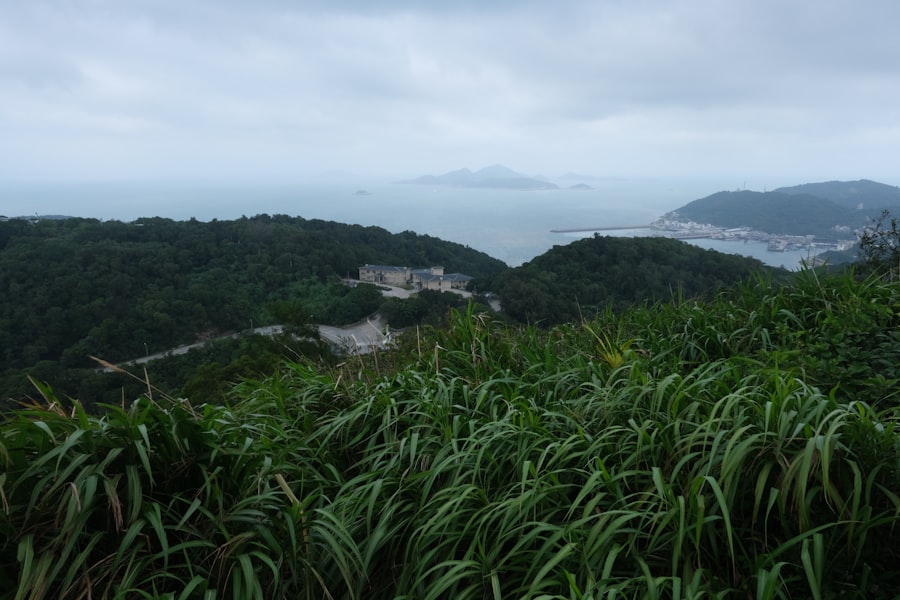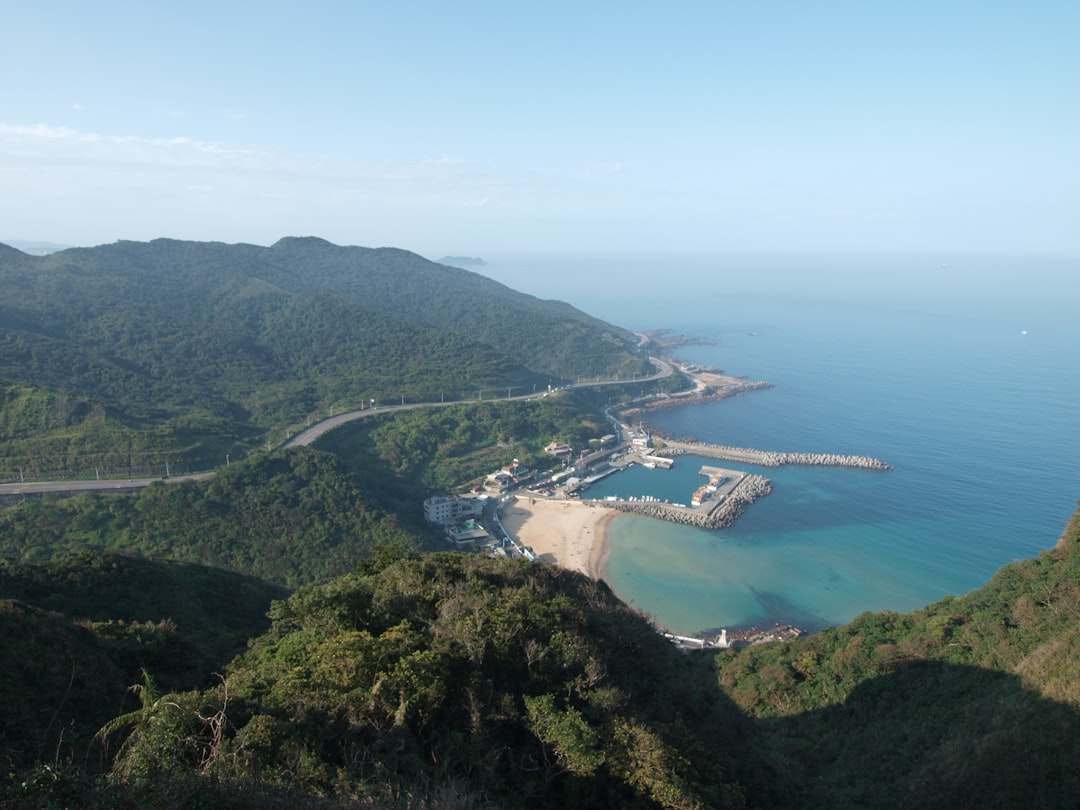The Taiwan Strait, a narrow body of water separating Taiwan from mainland China, has long been a focal point of geopolitical tension and historical significance. The roots of the current situation can be traced back to the Chinese Civil War, which culminated in 1949 when the Nationalist government retreated to Taiwan after being defeated by the Communist forces led by Mao Zedong. This division established two separate political entities: the People’s Republic of China (PRC) on the mainland and the Republic of China (ROC) in Taiwan.
The historical narrative surrounding this split is complex, marked by differing ideologies, national identities, and territorial claims that continue to shape relations across the strait. Over the decades, the Taiwan Strait has witnessed numerous confrontations and crises, including military skirmishes and diplomatic standoffs. The most notable incidents include the First and Second Taiwan Strait Crises in the 1950s, where military tensions escalated dramatically, leading to fears of broader conflict.
The historical context is further complicated by international involvement, particularly during the Cold War, when the United States supported Taiwan as a bulwark against communism in Asia. This historical backdrop is essential for understanding the contemporary dynamics at play in the region, as it informs both the political rhetoric and military strategies of the parties involved.
Key Takeaways
- The historical context of the Taiwan Strait highlights the complex and contentious relationship between China and Taiwan, rooted in a history of colonization and political upheaval.
- The political dynamics at play in the Taiwan Strait are characterized by competing claims to sovereignty and the ongoing struggle for international recognition.
- The military posture of China and Taiwan underscores the potential for conflict and the need for diplomatic solutions to prevent escalation.
- Economic interdependencies and trade relations between China and Taiwan have created a delicate balance of cooperation and competition with far-reaching implications.
- International diplomatic relations and alliances in the Taiwan Strait are crucial in shaping the geopolitical landscape and influencing the prospects for peace and stability.
The Political Dynamics at Play
The political landscape surrounding the Taiwan Strait is characterized by a complex interplay of domestic and international factors. In Taiwan, political sentiment has shifted over the years, with varying degrees of support for independence versus maintaining the status quo with China. The Democratic Progressive Party (DPP), which currently holds power, leans towards a more assertive stance on Taiwanese identity and sovereignty, often provoking strong reactions from Beijing.
Conversely, the Kuomintang (KMT), Taiwan’s main opposition party, traditionally advocates for closer ties with China, reflecting a more conciliatory approach that resonates with segments of the Taiwanese population. On the other side of the strait, the Chinese Communist Party (CCP) maintains a firm stance on its claim over Taiwan, viewing it as an integral part of its territory. The CCP’s political narrative emphasizes national unity and territorial integrity, often using strong rhetoric to discourage any moves towards formal independence by Taiwan.
This dynamic creates a charged atmosphere where political decisions are heavily influenced by nationalistic sentiments on both sides. The interplay of these political forces not only shapes cross-strait relations but also impacts broader regional stability and international diplomatic efforts.
The Military Posture of China and Taiwan

The military capabilities of both China and Taiwan play a crucial role in shaping the security dynamics of the Taiwan Strait. China has significantly modernized its military over the past few decades, investing heavily in advanced technologies and expanding its naval presence in the region. The People’s Liberation Army (PLA) has developed a range of capabilities designed to project power across the strait, including missile systems, naval vessels, and air force enhancements.
This military buildup is often perceived as a direct threat by Taiwan and has led to heightened tensions and an arms race in the region. In response to China’s military advancements, Taiwan has sought to bolster its own defense capabilities. The Taiwanese government has focused on asymmetric warfare strategies, emphasizing mobile defense systems and advanced technology to counteract China’s numerical superiority.
Additionally, Taiwan has sought to strengthen its alliances with other nations, particularly the United States, to enhance its security posture. This military dynamic creates a precarious balance in the Taiwan Strait, where any miscalculation or escalation could lead to significant conflict with far-reaching consequences for regional stability.
Economic Interdependencies and Trade Relations
| Country | Export Value (in million USD) | Import Value (in million USD) | Trade Balance (in million USD) |
|---|---|---|---|
| United States | 1,645 | 2,563 | -918 |
| China | 2,498 | 1,553 | 945 |
| Germany | 1,547 | 1,324 | 223 |
Despite the political tensions that characterize cross-strait relations, economic interdependencies between China and Taiwan have flourished over the years. Trade between the two entities has grown substantially, with Taiwan relying on China as one of its largest trading partners. Taiwanese businesses have invested heavily in mainland China, taking advantage of lower labor costs and expanding market opportunities.
This economic relationship has created a complex web of interdependence that complicates political tensions; while both sides may engage in hostile rhetoric, their economies are deeply intertwined. However, this economic reliance also poses risks for Taiwan. As China’s economy continues to grow and assert its influence globally, there are concerns about over-dependence on the mainland market.
Taiwanese leaders have recognized this vulnerability and have sought to diversify trade relationships with other countries in recent years. Initiatives such as the New Southbound Policy aim to strengthen ties with Southeast Asian nations and reduce reliance on China. This balancing act between economic cooperation and political sovereignty remains a critical challenge for Taiwan as it navigates its future in an increasingly competitive global landscape.
International Diplomatic Relations and Alliances
The international diplomatic landscape surrounding the Taiwan Strait is marked by a delicate balance of power and competing interests among global players. The United States plays a pivotal role in this dynamic, having maintained unofficial relations with Taiwan while officially recognizing the PRC since 1979. The U.S. commitment to Taiwan’s defense is enshrined in the Taiwan Relations Act, which obligates Washington to provide arms for self-defense without explicitly guaranteeing military intervention in case of conflict. Other countries also navigate this complex diplomatic terrain with varying degrees of engagement with both China and Taiwan. Some nations have formal diplomatic relations with Beijing while maintaining unofficial ties with Taipei, reflecting a pragmatic approach to balancing economic interests with political realities. As China’s global influence continues to expand, many countries find themselves reassessing their positions regarding Taiwan, often prioritizing economic partnerships over diplomatic recognition. This evolving landscape underscores the challenges faced by Taiwan in garnering international support while navigating an increasingly assertive China.
Cross-Strait Relations and People-to-People Exchanges

Despite political tensions, cross-strait relations have seen significant people-to-people exchanges that foster understanding and cultural connections between Taiwanese and Chinese citizens. Over the years, various initiatives have been established to promote tourism, education, and cultural exchanges between the two sides. These interactions have allowed individuals from both regions to engage directly with one another, often leading to a greater appreciation for shared cultural heritage.
However, these exchanges are not without challenges. Political sensitivities can complicate interactions at times, particularly when issues related to sovereignty arise. For instance, Taiwanese citizens traveling to mainland China may face scrutiny regarding their political views or affiliations.
Nevertheless, many individuals continue to seek opportunities for collaboration and dialogue across the strait, recognizing that personal connections can serve as a bridge amid broader geopolitical tensions.
Environmental and Ecological Concerns in the Taiwan Strait
The Taiwan Strait is not only a geopolitical hotspot but also an area facing significant environmental challenges that require cooperative efforts from both sides. Issues such as marine pollution, overfishing, and climate change pose threats to the delicate ecosystems within this body of water. Both China and Taiwan share responsibility for managing these environmental concerns; however, political tensions often hinder collaborative efforts.
Efforts to address ecological issues have been sporadic at best. While there have been some initiatives aimed at promoting sustainable fishing practices or addressing pollution from industrial activities along coastal areas, these efforts are often overshadowed by broader political disputes. Environmental organizations on both sides have called for increased cooperation to tackle these pressing challenges collectively.
As climate change continues to impact global ecosystems, it becomes increasingly important for both China and Taiwan to find common ground in addressing environmental concerns that transcend political boundaries.
Human Rights and Civil Liberties in Taiwan and China
Human rights issues represent another critical dimension of cross-strait relations that cannot be overlooked. In Taiwan, democratic governance allows for greater civil liberties and freedom of expression compared to mainland China, where the CCP maintains strict control over dissenting voices and civil society organizations. This disparity in human rights practices often becomes a point of contention in discussions about cross-strait relations.
Taiwan’s commitment to democratic values has garnered international support from various human rights organizations advocating for freedom and democracy in Asia. Conversely, China’s human rights record has drawn widespread criticism from global watchdogs who highlight issues such as censorship, repression of ethnic minorities, and lack of political freedoms. These contrasting approaches to governance not only shape domestic policies but also influence international perceptions of both entities within the context of their relationship.
Navigating the Legal and Jurisdictional Issues
The legal status of Taiwan remains one of the most contentious issues in cross-strait relations. While Taiwan operates as a separate entity with its own government and legal system, Beijing views it as a province of China that must eventually be reunified under its jurisdiction. This legal ambiguity complicates diplomatic interactions and creates challenges for international organizations seeking to engage with both parties.
Efforts to navigate these legal complexities often involve delicate negotiations that require careful consideration of sovereignty issues. For instance, Taiwan’s participation in international organizations is frequently hindered by China’s insistence on its “One China” policy, which limits Taipei’s ability to engage on global platforms effectively. As legal frameworks continue to evolve within this context, finding solutions that respect both parties’ interests while promoting stability remains an ongoing challenge.
The Role of the United States and Other Global Powers
The United States plays a crucial role in shaping dynamics within the Taiwan Strait through its strategic alliances and military presence in Asia-Pacific. Washington’s commitment to supporting Taiwan’s defense capabilities serves as a deterrent against potential aggression from Beijing while simultaneously reinforcing U.S.-Taiwan relations. However, this involvement also raises concerns about escalating tensions between China and the U.S., particularly as Beijing perceives American support for Taiwan as interference in its internal affairs.
Other global powers also influence cross-strait dynamics through their diplomatic engagements with both China and Taiwan. Countries such as Japan and Australia have expressed support for maintaining peace and stability in the region while navigating their own relationships with Beijing. As geopolitical competition intensifies among major powers, their actions regarding Taiwan will likely continue to shape regional security dynamics significantly.
Prospects for Peace and Stability in the Taiwan Strait
The prospects for peace and stability in the Taiwan Strait remain uncertain amid ongoing geopolitical tensions and evolving domestic politics on both sides. While there are opportunities for dialogue and cooperation—particularly concerning economic interdependence—political realities often overshadow these possibilities. The challenge lies in finding common ground that respects each side’s aspirations while mitigating risks associated with miscalculation or escalation.
Ultimately, fostering peace will require sustained efforts from all parties involved—Taiwanese leaders must navigate their domestic priorities while engaging constructively with Beijing; Chinese authorities must recognize that aggressive posturing may provoke further resistance rather than reconciliation; and international actors must play a balanced role that encourages dialogue without exacerbating tensions. Achieving lasting stability in this critical region will necessitate patience, diplomacy, and a commitment to understanding each other’s perspectives amidst an increasingly complex geopolitical landscape.
The Taiwan Strait, a critical waterway separating Taiwan and mainland China, has been a focal point of geopolitical tensions and strategic military maneuvers. For a deeper understanding of the geographical and political significance of this region, you can explore a related article on MyGeoQuest. This article provides insights into the historical context and current dynamics influencing the Taiwan Strait, offering a comprehensive overview of its role in regional security and international relations.
WATCH NOW! Unlocking Disaster: 7 Choke Points That Could Fracture Our Connected World Overnight
FAQs
What is the Taiwan Strait?
The Taiwan Strait is a body of water that separates the island of Taiwan from the southeastern coast of China.
How wide is the Taiwan Strait?
The Taiwan Strait is approximately 180 kilometers (110 miles) wide at its narrowest point.
What is the significance of the Taiwan Strait?
The Taiwan Strait is significant because it is a major international waterway and a strategic maritime passage for trade and military activities in the region.
What is the political significance of the Taiwan Strait?
The Taiwan Strait is politically significant because it represents the divide between the government of the People’s Republic of China on the mainland and the self-governing island of Taiwan.
Are there any territorial disputes in the Taiwan Strait?
Yes, there are territorial disputes in the Taiwan Strait, as China claims Taiwan as part of its territory, while Taiwan considers itself a sovereign state.
What is the current geopolitical situation in the Taiwan Strait?
The geopolitical situation in the Taiwan Strait is complex, with tensions between China and Taiwan, as well as involvement from other countries, including the United States, due to the strategic importance of the region.
